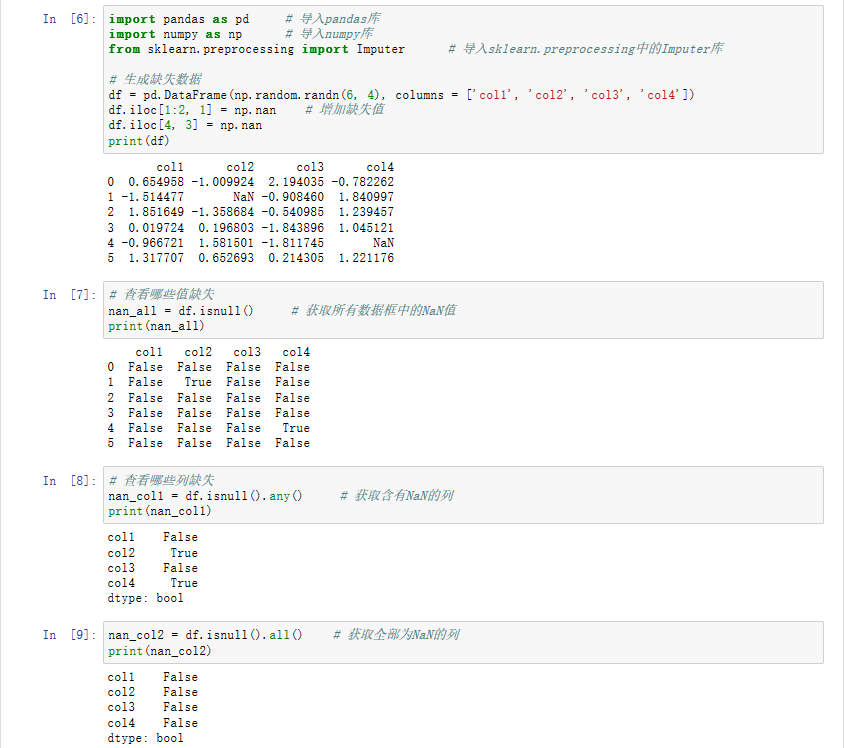I am currently working with Telephony Manager(USSD response) available in android api level 26(Nexus 6P). For single step ussd session, it's working.
reference:
http://codedrago.com/q/140674/android-telephony-telephonymanager-ussd-android-8-0-oreo-does-android-8-0-api-26-support-sending-and-repying-to-ussd-messages
example:
USSD request : "A" (ussd session initiates)
USSD response : "X" (ussd session terminates)
TelephonyManager = telephonyManager(TelephonyManager)getSystemService(Context.TELEPHONY_SERVICE);
Handler handler = new Handler();
TelephonyManager.UssdResponseCallback callback = new TelephonyManager.UssdResponseCallback() {
@Override
public void onReceiveUssdResponse(TelephonyManager telephonyManager, String request, CharSequence response) {
super.onReceiveUssdResponse(telephonyManager, request, response);
Log.e("ussd",response.toString());
}
@Override
public void onReceiveUssdResponseFailed(TelephonyManager telephonyManager, String request, int failureCode) {
super.onReceiveUssdResponseFailed(telephonyManager, request, failureCode);
Log.e("ussd","failed with code " + Integer.toString(failureCode));
}
};
try {
Log.e("ussd","trying to send ussd request");
telephonyManager.sendUssdRequest("*123#",
callback,
handler);
}catch (Exception e){
String msg= e.getMessage();
Log.e("DEBUG",e.toString());
e.printStackTrace();
}
but for interactive ussd request-response(multi-step), it's not working.
Multi step scenario is as follows:
step # 1.
USSD request : "A" (ussd session initiates)
USSD response : "X"
step # 2.
USSD request : "B" (ussd session continues)
USSD response : "Y"
step # 3.
USSD request : "C"
USSD response : "Z" (ussd session terminates)
I am able to get a menu, respond to it by sending a number but past that, I guess am at the mercy of the telco - they send a menu that blocks the entire screen and if you cancel it the entire session dies. Having worked in telecom, I think that this might be different from telco to telco because some of them have gateways that can kill a user initiated session and replace it with a telecom side originated session. technically, the 2 sessions are detached. but here is my code:
package org.rootio.test.telephony.telephonyautorespond;
import android.annotation.TargetApi;
import android.app.Activity;
import android.content.Context;
import android.os.Build;
import android.os.Bundle;
import android.os.Handler;
import android.os.ResultReceiver;
import android.telecom.TelecomManager;
import android.telephony.PhoneStateListener;
import android.telephony.SubscriptionManager;
import android.telephony.TelephonyManager;
import android.util.Log;
import android.view.Menu;
import android.view.MenuItem;
import android.view.View;
import android.widget.EditText;
import android.widget.Switch;
import android.widget.Toast;
import com.google.android.material.snackbar.Snackbar;
import java.lang.reflect.InvocationTargetException;
import java.lang.reflect.Method;
import androidx.annotation.RequiresApi;
import static android.content.ContentValues.TAG;
interface UssdResultNotifiable {
void notifyUssdResult(String request, String returnMessage, int resultCode);
}
public class HomeActivity extends Activity implements UssdResultNotifiable {
USSDSessionHandler hdl;
private TelephonyManager telephonyManager;
private PhoneCallListener listener;
private TelecomManager telecomManager;
@Override
protected void onCreate(Bundle savedInstanceState) {
super.onCreate(savedInstanceState);
setContentView(R.layout.activity_home);
}
public void onUssdSend(View view) {
//USSDHandler callback = new USSDHandler(view);
/* if (checkSelfPermission(Manifest.permission.CALL_PHONE) != PackageManager.PERMISSION_GRANTED) {
*//*if(ActivityCompat.shouldShowRequestPermissionRationale(HomeActivity.this, Manifest.permission.CALL_PHONE))
{
}
else
{*//*
//ActivityCompat.requestPermissions(HomeActivity.this, new String[]{Manifest.permission.CALL_PHONE}, 0);
// }
Snackbar.make(view, "permissions were missing", Snackbar.LENGTH_LONG)
.setAction("Response", null).show();
return;
}*/
//HomeActivity.this.telephonyManager.sendUssdRequest("*#123*99#", callback, new Handler());
hdl = new USSDSessionHandler(HomeActivity.this, HomeActivity.this);
hdl.doSession(((EditText)this.findViewById(R.id.ussdText)).getText().toString());
}
@Override
public boolean onCreateOptionsMenu(Menu menu) {
// Inflate the menu; this adds items to the action bar if it is present.
getMenuInflater().inflate(R.menu.menu_home, menu);
return true;
}
@Override
public boolean onOptionsItemSelected(MenuItem item) {
// Handle action bar item clicks here. The action bar will
// automatically handle clicks on the Home/Up button, so long
// as you specify a parent activity in AndroidManifest.xml.
int id = item.getItemId();
//noinspection SimplifiableIfStatement
if (id == R.id.action_settings) {
return true;
}
return super.onOptionsItemSelected(item);
}
public void toggleListener(View v) {
if (((Switch) v).isChecked()) {
this.listenForTelephony();
Toast.makeText(this, "Listening for calls", Toast.LENGTH_LONG).show();
} else {
this.stopListeningForTelephony();
}
}
private void listenForTelephony() {
this.telephonyManager = (TelephonyManager) this.getSystemService(this.TELEPHONY_SERVICE);
this.telecomManager = (TelecomManager) this.getSystemService(this.TELECOM_SERVICE);
this.listener = new PhoneCallListener();
telephonyManager.listen(listener, PhoneStateListener.LISTEN_CALL_STATE);
}
private void stopListeningForTelephony() {
this.telephonyManager = null;
this.telecomManager = null;
}
@Override
public void notifyUssdResult(final String request, final String returnMessage, final int resultCode) {
this.runOnUiThread(new Runnable() {
@Override
public void run() {
Toast.makeText(HomeActivity.this, "Request was " + request + "\n response is " + returnMessage + "\n result code is " + resultCode, Toast.LENGTH_LONG).show();
}
});
}
class PhoneCallListener extends PhoneStateListener {
@RequiresApi(api = Build.VERSION_CODES.M)
@Override
public void onCallStateChanged(int state, String incomingNumber) {
switch (state) {
case TelephonyManager.CALL_STATE_RINGING:
HomeActivity.this.telecomManager.acceptRingingCall();
break;
case TelephonyManager.CALL_STATE_IDLE:
Toast.makeText(HomeActivity.this, "Call is no longer active...", Toast.LENGTH_LONG);
break;
}
}
}
@TargetApi(Build.VERSION_CODES.O)
class USSDHandler extends TelephonyManager.UssdResponseCallback {
View parent;
USSDHandler(View v) {
this.parent = v;
}
@Override
public void onReceiveUssdResponse(TelephonyManager telephonyManager, String request, CharSequence response) {
super.onReceiveUssdResponse(telephonyManager, request, response);
Snackbar.make(this.parent, response, Snackbar.LENGTH_LONG)
.setAction("Response", null).show();
}
@Override
public void onReceiveUssdResponseFailed(TelephonyManager telephonyManager, String request, int failureCode) {
super.onReceiveUssdResponseFailed(telephonyManager, request, failureCode);
Snackbar.make(this.parent, "error is " + failureCode + " for req " + request, Snackbar.LENGTH_LONG)
.setAction("Response", null).show();
}
}
}
class USSDSessionHandler {
TelephonyManager tm;
private UssdResultNotifiable client;
private Method handleUssdRequest;
private Object iTelephony;
USSDSessionHandler(Context parent, UssdResultNotifiable client) {
this.client = client;
this.tm = (TelephonyManager) parent.getSystemService(Context.TELEPHONY_SERVICE);
try {
this.getUssdRequestMethod();
} catch (Exception ex) {
//log
}
}
private void getUssdRequestMethod() throws ClassNotFoundException, NoSuchMethodException, InvocationTargetException, IllegalAccessException {
if (tm != null) {
Class telephonyManagerClass = Class.forName(tm.getClass().getName());
if (telephonyManagerClass != null) {
Method getITelephony = telephonyManagerClass.getDeclaredMethod("getITelephony");
getITelephony.setAccessible(true);
this.iTelephony = getITelephony.invoke(tm); // Get the internal ITelephony object
Method[] methodList = iTelephony.getClass().getMethods();
this.handleUssdRequest = null;
/*
* Somehow, the method wouldn't come up if I simply used:
* iTelephony.getClass().getMethod('handleUssdRequest')
*/
for (Method _m : methodList)
if (_m.getName().equals("handleUssdRequest")) {
handleUssdRequest = _m;
break;
}
}
}
}
public void doSession(String ussdRequest) {
try {
if (handleUssdRequest != null) {
handleUssdRequest.setAccessible(true);
handleUssdRequest.invoke(iTelephony, SubscriptionManager.getDefaultSubscriptionId(), ussdRequest, new ResultReceiver(new Handler()) {
@Override
protected void onReceiveResult(int resultCode, Bundle ussdResponse) {
/*
* Usually you should the getParcelable() response to some Parcel
* child class but that's not possible here, since the "UssdResponse"
* class isn't in the SDK so we need to
* reflect again to get the result of getReturnMessage() and
* finally return that!
*/
Object p = ussdResponse.getParcelable("USSD_RESPONSE");
if (p != null) {
Method[] methodList = p.getClass().getMethods();
for(Method m : methodList)
{
Log.i(TAG, "onReceiveResult: " + m.getName());
}
try {
CharSequence returnMessage = (CharSequence) p.getClass().getMethod("getReturnMessage").invoke(p);
CharSequence request = (CharSequence) p.getClass().getMethod("getUssdRequest").invoke(p);
USSDSessionHandler.this.client.notifyUssdResult("" + request, "" + returnMessage, resultCode); //they could be null
} catch (NoSuchMethodException | IllegalAccessException | InvocationTargetException e) {
e.printStackTrace();
}
}
}
});
}
} catch (IllegalAccessException | InvocationTargetException e1) {
e1.printStackTrace();
}
}
}
please ignore the call answering stuff - I was using this app before to test automatic call answering on Oreo. And below is the Layout file for the display:
<?xml version="1.0" encoding="utf-8"?>
<LinearLayout xmlns:android="http://schemas.android.com/apk/res/android"
xmlns:app="http://schemas.android.com/apk/res-auto"
xmlns:tools="http://schemas.android.com/tools"
android:layout_width="match_parent"
android:layout_height="match_parent"
android:orientation="vertical"
tools:context=".HomeActivity">
<LinearLayout
android:layout_width="match_parent"
android:layout_height="wrap_content"
android:orientation="horizontal">
<TextView
android:id="@+id/textView"
android:layout_width="wrap_content"
android:layout_height="wrap_content"
android:layout_weight="1"
android:text="USSD Input"
android:textSize="18sp" />
<EditText
android:id="@+id/ussdText"
android:layout_width="wrap_content"
android:layout_height="wrap_content"
android:layout_weight="1"
android:ems="10"
android:inputType="textPersonName" />
</LinearLayout>
<Button
android:id="@+id/button"
android:layout_width="match_parent"
android:layout_height="wrap_content"
android:onClick="onUssdSend"
android:text="send" />
</LinearLayout>
I managed to bypass some of the problems (like the multisession USSD responses not working) by using Reflection. I've made a GitHub gist here.
Obviously the assumption is that, the correct permissions (only CALL_PHONE at this point) are given - In terms of Contexts, I've only ever run this in an Activity but I think it would work fine in most if not all/any.
The next thing is figuring out how to sustain the session, if at all possible.
These APIs don't properly handle menu-based USSDs. Their intended use case would be for things like querying simple things like minutes or data left in the user's plan. For menu-based systems there would need to be some notion of a continued session, which is not something the APIs support.
public class MainActivity extends AppCompatActivity {
private Button dail;
private String number;
private TelephonyManager telephonyManager;
@Override
protected void onCreate(Bundle savedInstanceState) {
super.onCreate(savedInstanceState);
setContentView(R.layout.activity_main);
telephonyManager = (TelephonyManager) getSystemService(Context.TELEPHONY_SERVICE);
dail = (Button) findViewById(R.id.dail);
dail.setOnClickListener(new View.OnClickListener() {
@Override
public void onClick(View v) {
if (ActivityCompat.checkSelfPermission(MainActivity.this, Manifest.permission.CALL_PHONE) != PackageManager.PERMISSION_GRANTED) {
runtimepermissions();
return;
}else{
telephonyManager.sendUssdRequest("*121#", new TelephonyManager.UssdResponseCallback() {
@Override
public void onReceiveUssdResponse(TelephonyManager telephonyManager, String request, CharSequence response) {
super.onReceiveUssdResponse(telephonyManager, request, response);
Log.d("Received response","okay");
((TextView)findViewById(R.id.response)).setText(response);
}
@Override
public void onReceiveUssdResponseFailed(TelephonyManager telephonyManager, String request, int failureCode) {
super.onReceiveUssdResponseFailed(telephonyManager, request, failureCode);
Log.e("ERROR ","can't receive response"+failureCode);
}
},new Handler(Looper.getMainLooper()){
@Override
public void handleMessage(Message msg) {
Log.e("ERROR","error");
}
});
}
}
});
}
public boolean runtimepermissions() {
if (Build.VERSION.SDK_INT >= 23 && ContextCompat.checkSelfPermission(this, Manifest.permission.READ_PHONE_STATE) != PackageManager.PERMISSION_GRANTED
&& ContextCompat.checkSelfPermission(this, Manifest.permission.CALL_PHONE) != PackageManager.PERMISSION_GRANTED) {
requestPermissions(new String[]{Manifest.permission.READ_PHONE_STATE, Manifest.permission.CALL_PHONE}, 100);
return true;
}
return false;
}
@Override
public void onRequestPermissionsResult(int requestCode, @NonNull String[] permissions, @NonNull int[] grantResults) {
super.onRequestPermissionsResult(requestCode, permissions, grantResults);
if (requestCode == 100) {
if (grantResults[0] == PackageManager.PERMISSION_GRANTED && grantResults[1] == PackageManager.PERMISSION_GRANTED) {
Log.d("PERMISSIONS","granted");
// doJob();
} else {
runtimepermissions();
}
}
}
}
if your using dual sim make sure change to the network that your going to test(In my i used Airtel(*121#).



![Prime Path[POJ3126] [SPFA/BFS] Prime Path[POJ3126] [SPFA/BFS]](https://oscimg.oschina.net/oscnet/e1200f32e838bf1d387d671dc8e6894c37d.jpg)
